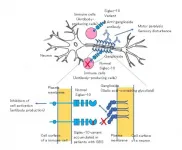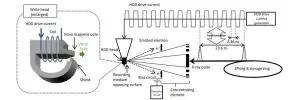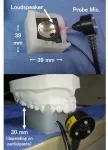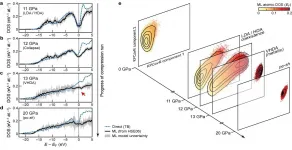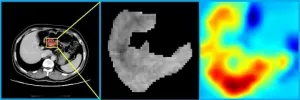INFORMATION:
Title: A framework for identifying the recent origins of mobile antibiotic resistance genes, https://doi.org/10.1038/s42003-020-01545-5
Research team: Research interests - Joakim Larsson group, https://www.gu.se/en/biomedicine/about-us/department-of-infectious-diseases/joakim-larsson-group
CARe: Centre for Antibiotic Resistance Research, https://www.gu.se/en/care
Where antibiotic resistance comes from
2021-01-07
(Press-News.org) By comparing thousands of bacterial genomes, scientists in Gothenburg, Sweden have traced back the evolutionary history of antibiotic resistance genes. In almost all cases where an origin could be determined, the gene started to spread from bacteria that, themselves, can cause disease.
While human DNA is only passed down from parent to child, bacteria also have the habit of sharing some of their genes across species. This often applies to genes that make the bacteria resistant to antibiotics.
The use and overuse of antibiotics provide an advantage to those bacteria that have acquired resistance genes, thus further promoting the spread of resistance and making it more difficult to treat infections. This development threatens large parts of modern healthcare.
The rapid advances in DNA sequencing during the last decade has made it possible to study bacterial evolution much more effectively than ever before. This is an important background to the new study, published in the scientific journal Communications Biology.
The team from Gothenburg explored the scientific literature for claims of recent origins for antibiotic resistance genes, added information from public DNA-sequence-databases, and scrutinized the evidence at hand. While antibiotic-producing bacteria often are speculated to be the source for antibiotic resistance genes (as self-defence), this was not what the scientists found. None of the origin species found are known antibiotic producers. Strikingly, all verified origin species, except one, are known to cause disease, at least from time to time.
Professor Joakim Larsson, senior author of the study and director of the Centre for Antibiotic Resistance Research at University of Gothenburg, CARe, comments on the finding:
"Given that the overwhelming majority of bacteria are harmless to us, it was quite surprising that these genes almost exclusively came from bacteria causing disease. On the other hand, it makes some sense since such bacteria often trigger antibiotic use when we become infected, and other pathogens are often nearby, ready to engage in gene-transfer. These findings underscores the microbial-rich gut flora humans and domestic animals given antibiotics as arenas for resistance evolution" he says.
Knowing where resistance genes come from can inform measures to delay the emergence of additional resistance genes in the clinics. Importantly, the authors conclude that the origin is still unknown for more than 95% of all known resistance genes.
"Most likely, most of them come from un-sequenced bacterial species. We know the majority of the species that frequently tend to reside in the gut or on the skin of ourselves and of domestic animals. Therefore, this points to an important role of a much less explored gene reservoir - the environmental microbiota. The role of the environment as a likely source for antibiotic resistance also stress the need reduce risks for resistance development in the environment, for example by limiting discharges of antibiotics though wastewaters", says Larsson.
ELSE PRESS RELEASES FROM THIS DATE:
A subtle change in the DNA may predispose to polyneuropathy after gut infection
2021-01-07
Tokyo, Japan - Guillain-Barré syndrome is an infamous autoimmune neuropathy, yet genetic variants predisposing individuals to this disease have yet to be described. In a new study, researchers from Tokyo Medical and Dental University (TMDU) discovered two novel genetic variants in a protein made by antibody-forming immune cells, providing a mechanism for the development of the disease.
The body's immune system is supposed to fight off invaders; however, in autoimmune diseases this defense goes rogue and attacks the host instead through the production of autoantibodies. Guillain-Barré syndrome (GBS) is an acutely developing, autoimmune peripheral neuropathy that leads to muscle ...
New hard disk write head analytical technology can increase hard disk capacities
2021-01-07
Using synchrotron radiation at SPring-8 - a large-scale synchrotron radiation facility - Tohoku University, Toshiba Corporation, and the Japan Synchrotron Radiation Research Institute (JASRI) have successfully imaged the magnetization dynamics of a hard disk drive (HDD) write head for the first time, with a precision of one ten-billionth of a second. The method makes possible precise analysis of write head operations, accelerating the development of the next-generation write heads and further increasing HDD capacity.
Details of the research were published in the Journal of Applied Physics on October 6 and presented at the 44th Annual Conference on Magnetics in Japan, on December 14.
International Data Corporation predicts a five-fold increase ...
Genomes reveal insights into much-loved Aussie animals
2021-01-07
The genomes of egg-laying monotreme mammals, platypus and echidna, have been published in the prestigious journal Nature, providing a valuable public resource for research in mammalian biology and evolution, with applications for their conservation and health.
Monotremes display a unique mix of mammalian and reptilian features and form the most distantly related, and least understood, group of living mammals. Their genetic blueprint provides fundamental insights into their unique biology and into the evolution of all mammals.
"The platypus and ...
Study explains role of bone-conducted speech transmission in speech production and hearing
2021-01-07
The perception of our own voice depends on sound transmission through air (air-conducted) as well as through the skull bone (bone-conducted or BC). The transmission properties of BC speech are, however, not well understood. Now, scientists from Japan Advanced Institute of Science and Technology report their latest findings on BC transmission under the influence of oral cavity sound pressure, which can boost BC-based technology and basic research on hearing loss and speech impairment.
Ever wondered why your voice sounds different in a recording compared to how you perceive it as you speak? You are not alone. The ...
Response to infection therapy better understood thanks to a new technique
2021-01-07
Infectious diseases are caused by pathogenic viruses, bacteria, fungi or parasites. The treatment of bacterial and fungal infections relies particularly on antimicrobial drugs, while the focus in treating viral infections is the alleviation of symptoms.
Initial therapy for infection is often empiric and guided by clinical presentation. Its efficacy on the pathogen is, however, only seldom understood at therapy initiation. Although methods for assessing treatment responses exist, the effectiveness is mainly determined through monitoring symptoms and signs of infections.
Advances in sequencing technology have made characterization of genomes and gene expression products increasingly practical. The technology has also made it possible ...
Machine-learning models of matter beyond interatomic potentials
2021-01-07
Combining electronic structure calculations and machine learning (ML) techniques has become a common approach in the atomistic modelling of matter. Using the two techniques together has allowed researchers, for instance, to create models that use atomic coordinates as the only inputs to inexpensively predict any property that can be computed by the first-principles calculations that had been used to train them.
While the earliest and by now most advanced efforts have focused on using predictions of total energies and atomic forces to construct interatomic potentials, more recent efforts have targeted additional properties of crystals and molecules such as ionization energies, NMR chemical shieldings, dielectric response properties and charge density. In the paper "Learning ...
When galaxies collide: Hubble showcases six beautiful galaxy mergers
2021-01-07
It is during rare merging events that galaxies undergo dramatic changes in their appearance and in their stellar content. These systems are excellent laboratories to trace the formation of star clusters under extreme physical conditions.
The Milky Way typically forms star clusters with masses that are 10 thousand times the mass of our Sun. This doesn't compare to the masses of the star clusters forming in colliding galaxies, which can reach millions of times the mass of our Sun.
These dense stellar systems are also very luminous. Even after the collision, when the resulting galactic system begins to fade into a more quiescent phase, these very massive star clusters will shine throughout their host galaxy, as long-lasting witnesses of past merging events.
By studying the six galaxy ...
Autoimmune diseases: similar molecular signatures in target tissues
2021-01-07
Autoimmune diseases are diseases of "mistaken identity", where the immune system - which is supposed to protect us against infectious diseases and neoplasias - mistakenly attacks and destroys components of our own body. The incidence of autoimmune diseases is increasing on a worldwide basis, and these diseases - including type 1 diabetes (T1D), systemic lupus erythematosus (SLE), multiple sclerosis (MS) and rheumatoid arthritis (RA) - now affect up to 5% of the population in different regions. There is no cure for autoimmune diseases, and while the immune target of T1D, SLE, MS, and RA are distinct, they share several similar elements, including up to 50% common genetic risk, chronic local inflammation and mechanisms ...
Drug combination increases susceptibility to chemotherapy in cases of severe neuroblastoma
2021-01-07
Researchers at the University of Gothenburg now suggest a possible cure for children with hard-to-treat forms of neuroblastoma using a new combination of drugs. In a new study in the journal Cancer Research, they describe how a two small molecule-based drug combination likely inhibit the tumor's growth.
Neuroblastoma is the most common form of childhood cancer, derived from the peripheral nervous system, i.e., the part of the nervous system that is not the brain or spinal cord. The disease can occur in the chest, neck, abdomen and adrenal glands and can also spread to the spine. Symptoms include general aches, anemia and skeletal pain.
The ...
Deep learning helps predicting occult peritoneal metastasis in stomach cancer
2021-01-07
Stomach cancer, or gastric cancer, is a common gastrointestinal malignancy. Peritoneal metastasis occurs in a majority of patients with advanced stomach cancer and is considered as an aggressive disease with poor outcomes.
Patients with peritoneal metastasis are typically not eligible for curative surgery. Therefore, preoperative detection and diagnosis of peritoneal metastasis are critical to inform treatment decision-making and avoid unnecessary surgery.
A new study published in the JAMA Network Open on Jan. 5 shows that deep learning can help predicting the occult peritoneal metastasis in stomach cancer. It provides a novel and noninvasive approach for ...

